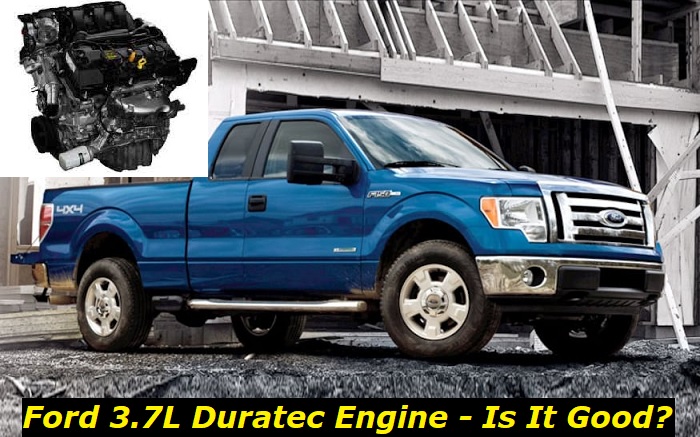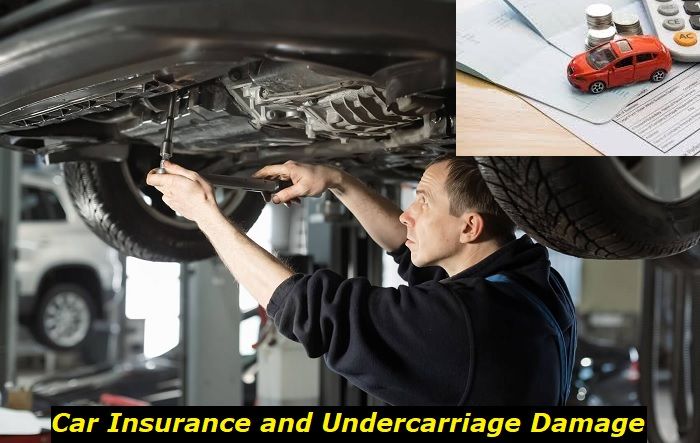Ford's 3.7L Duratec is not one of the most popular engines in the automotive world. Anyway, it is used in a variety of vehicles, from Ford to Mazda to Lincoln. The engine is known for its longevity and relatively few problems. It also possesses specs that can be tailored to deliver either higher performance or better fuel economy.
This article showcases the essential features of the engine that you should be aware of before buying a vehicle equipped with it. It highlights some aspects relating to its reliability, too, such as the common problems owners encounter with it. In the end, we hope that all the information provided here will allow you to make a more educated decision prior to your purchase.

Key features and my opinion about the engine
- Production years:2009-2020
- Average lifespan of 3.7L V6 Duratec:210,000-250,000 miles
- Fuel supply type:port injection
- Power range:272-350 hp
- Fuel efficiency:bad
- Engine block material:aluminum
- Engine reliability score:medium
- The most common problems:water pump failure, phasers are pretty weak, oil leaks are common.
Longevity of the Ford 3.7 Duratec Engine
The Duratec engine has been in existence since 1993, and it continues to be produced in the present. The Ford's 3.7L Duratec engine, otherwise known as the Duratec 37, is a derivative of the product line under the Ford Cyclone V6 series. Its mass production spans from 2008 to the present, which means it has endured strong competition within the automotive industry over the years and is widely accepted by buyers.
Other than performance, one of the most important factors to consider when buying an engine is its durability. Having a long engine life that is resilient enough to last equates with lesser trips to the mechanics for repairs and long maintenance for intervals, which will surely save you a lot of money spent on mechanics and time consumed on service centers.
As with other Ford engines, the common consensus about the longevity of the 3.7 Duratec is pegged at 250,000 miles. Some say that the numbers can even be stretched out more with more meticulous maintenance.
Common Problems of the Ford 3.7 Duratec Engine
In general, the Ford 3.7 Duratec is a very reliable engine with good appraisals from consumer reviews. However, it is not without its share of problems after prolonged use just like any other engine out there.
According to consumer reports, here are the common problems encountered by the users of this engine:
1. Check Engine Light
The Check Engine light notification in the dash mostly results in the engine's sudden loss of power. It may be followed by your engine no longer starting or struggling to stay on. This can be triggered by any problem related to the engine.
2. Power Loss
Your engine may feel like it is having a hard time providing the needed output even if you are pressing hard on the accelerator or even on low gears.
3. Rough Idling
During stops while your engine is on, your vehicle may feel like it is struggling to power itself.
4. Hard Starts
Even if you've only parked your vehicle for a couple of hours or even minutes, restarting it can be such a chore for you.
5. Knocking Noises
Knocking or clunky noises may originate from the engine bay.
6. Overheating
This comes with a warning light on the dash as well as a combination of any of the abovementioned symptoms. In addition, you may notice that your air conditioning unit is starting to blow hot air and your hood begins emitting steam.
Common Causes of the Ford 3.7 Duratec Engine Issues
The problems enumerated in the previous section are commonly attributed to the following parts of the 3.7 Duratec engine that are more prone to wear than other components:
1. Damaged Water Pump Bearings
If you're hearing a whining noise from your engine together with performance and overheating issues, it could be a sign that your water pump bearings are damaged. There's no other way around this problem than by replacing the water pump. Changing this part is a relatively simple task though that you can do yourself with just a few basic tools.
Here's a step-by-step guide on how to do it:
a. Don't forget to detach the negative cable of the battery to avoid shocks.
b. Open the hood and locate the water pump. It's usually located near the front of the engine, on the left side.
c. Once you've found it, remove the timing chain from the pulley. You may need a wrench to loosen the tensioner pulley first.
d. Next, use a socket wrench to remove the bolts holding the water pump in place. There are usually four or five bolts.
e. Carefully remove the old water pump and set it aside.
f. Now, take the new water pump and line it up with the bolt holes. Make sure that the gasket is in place before you start to screw in the new pump.
g. Use the socket wrench to tighten the bolts, then replace the timing chain and tensioner pulley.
h. Reconnect the battery cable that you removed prior.
i. That's it! You've successfully replaced your water pump bearings. Be sure to check for leaks before you start the engine.
2. Cam Phasers Failure
Too much noise and power problems in the Ford 3.7 Duratec engine usually indicate failure in the cam phasers. The phasers control the timing of the camshafts, and they can become damaged over time. Fortunately, replacing them is not too difficult, and you can do it yourself with some basic tools.
If you follow these steps, you should be able to replace your cam phasers without any problems:
a. Begin by disconnecting the negative battery cable.
b. Remove the engine cover and oil filter housing.
c. Unbolt the timing chain tensioner and remove the timing chain.
d. Remove the valve covers.
e. Unbolt the cam phasers and remove them from the engine.
f. Install the new cam phasers, being sure to torque them to the correct specifications.
g. Re-install the timing chain, tensioner, valve covers, and oil filter housing.
h. Replace the engine cover and the battery cable.
i. Start the engine to check that everything is working properly.
3. Worn VCT Solenoid
The VCT solenoid is an integral part of the camshaft phaser. Thus, if the part is already worn out, it can bring about failure in the camshaft phaser.
A damaged solenoid should be replaced right away using the following steps:
a. Remove the negative battery cable from the battery.
b. Unscrew and remove the engine cover.
c. Find the VCT solenoid on the side of the cylinder head near the front of the engine (it will have two electrical connectors going to it).
d. Unplug both electrical connectors from the VCT solenoid.
e. Use a ratchet and socket to remove the bolt holding the VCT solenoid in place.
f. Pull the old VCT solenoid out of its socket and discard it.
g. Insert the new VCT solenoid into its socket and hand-tighten the bolt to hold it in place (do not overtighten).
h. Reconnect both electrical connectors to the new VCT solenoid.
i. Replace the engine cover and screw it back into place.
j. Reconnect the negative battery cable to the battery.
4. Ignition Coil Fault
The ignition coil in your Ford 3.7 Duratec engine is responsible for providing the spark that ignites the air/fuel mixture in the cylinders. If this coil fails, your engine will misfire and run poorly. There are a few symptoms that can indicate a failing ignition coil, including misfiring engine, rough idle, decreased fuel economy, check engine light illuminated on the dash.
If you notice any of these symptoms, it's time to test the ignition coil to see if it is indeed the cause. The easiest way to do this is with an ohmmeter. Simply remove the coil from its mounting bracket and connect the ohmmeter probes to the positive and negative terminals on the coil. The resistance should be within the manufacturer's specifications. If it's not, then the coil needs to be replaced.
Once you've diagnosed a faulty ignition coil, it's time to replace it. This is a fairly easy task that can be done at home with just a few tools.
a. The first step is to disconnect the battery to prevent any electrical shorts.
b. Next, locate the ignition coil on the engine. It will be mounted on a bracket near the spark plugs.
c. Use a socket and wrench to remove the bolts that hold it in place.
d. With the coil removed, you can now install the new one. Simply reverse the process, being careful not to cross-thread the bolts.
e. Once the new coil is in place, reconnect the battery and start the engine to test it. If all goes well, the misfire should be gone and your engine will run smoothly once again.
Ford 3.7 Duratec Engine Key Specs
The Ford 3.7 Duratec is a naturally-aspirated engine. That means it relies on atmospheric pressure for its air intake with a more direct throttle response. It also sports a V6 layout, which means it benefits from more power and smoother run than a four-cylinder engine while offering better stability and handling than e V8.
The 3.7 Duratec is highlighted by its longitudinal orientation and dual overhead cam (DOHC) valve configuration. It is made of aluminum head and block, and it utilizes a timing chain. Airflow is managed via its 95.5 mm bore and 87.6 mm stroke. Meanwhile, it has a compression ratio of 10.5:1, which translates to a high thermal efficiency leading to highly efficient production of energy coming from the engine's combustion process.
The engine is known for its wide range of vehicle applications primarily in Ford, Mazda, and Lincoln brands. These include the following popular models:
- Ford Edge Sport
- Ford F-150
- Ford Mustang
- Ford Police Interceptor
- Ford Transit
- Lincoln Continental
- Lincoln MKS
- Lincoln MKT
- Lincoln MKX
- Mazda CX-9
- Mazda 6
Depending on the vehicle using it, the output of the engine ranges from 275 to 305 hp at 6,000 to 6,500 rpm, and from 260 to 280 lb-ft of torque at 4,000 to 4,250 rpm. The engine is usually partnered with a six-speed manual or automatic transmission and RWD or AWD drivetrain.
In an ideal setup with the 2017 Ford Mustang, the unit is capable of going from 0 to 60 mph in just 5.4 seconds with an electronically-limited top speed of 159 mph or an estimated 163 mph without the limiter. On the other hand, if it is partnered with the utilitarian Ford F-150, the 3.7L V6 is estimated to get 16 mpg on city drives and 23 mpg on highway drives.
Conclusion
Based on our investigation, the instances of the common problems attributed to the Ford 3.7 Duratec engine are quite low. Therefore, considering its durable engineering, performance, and fuel economy, we strongly recommend vehicles fitted with it to buyers.
About the authors
The CarAraC research team is composed of seasoned auto mechanics and automotive industry professionals, including individuals with advanced degrees and certifications in their field. Our team members boast prestigious credentials, reflecting their extensive knowledge and skills. These qualifications include: IMI: Institute of the Motor Industry, ASE-Certified Master Automobile Technicians; Coventry University, Graduate of MA in Automotive Journalism; Politecnico di Torino, Italy, MS Automotive Engineering; Ss. Cyril and Methodius University in Skopje, Mechanical University in Skopje; TOC Automotive College; DHA Suffa University, Department of Mechanical Engineering






Add comment